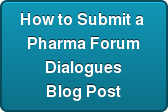Inter Partes Review (IPR), introduced by the America Invents Act (AIA), opens the door to another venue and procedure to challenge the validity of a patent. IPR on pharmaceutical patents is drawing increasing attention as an additional threat for a research-based (brand) pharmaceutical company facing or already involved in Hatch-Waxman litigation—the most common type of patent litigation between brands and generics seeking to market copies of branded products.

 Overview of Hatch-Waxman
Overview of Hatch-Waxman
Litigation and IPR
Hatch-Waxman litigation typically occurs between a brand company, which holds a New Drug Application (NDA) to sell a drug, and a generic, which files an Abbreviated New Drug Application (ANDA) requesting FDA approval to market a generic copy of the NDA holder’s drug.
Left, David Conca, right, Nao Takada, Paul Hastings
Generic companies can typically file an ANDA as early as four years after NDA approval when a drug receives a five-year new compound exclusivity from the FDA.
When submitting an ANDA, generics are required to make a certification as to each of the patents listed in the Orange Book, which contains patents that claim the drug, or a method of using the drug and to which a claim of patent infringement could reasonably be asserted if a person not licensed by the owner engaged in the manufacture, use or sale of the drug.
The most typical certifications made by generics are (1) those in which the generic agrees not to market its product until the expiration of a listed patent (known as a Paragraph III certification) and (2) those in which the generic asserts invalidity or non-infringement of the patents listed in the Orange Book (known as a Paragraph IV certification). If the generic files a Paragraph IV certification, the brand company may then sue the generic in federal court to seek a judgment that the patents would be infringed by sale of the generic copy and to prevent the generic from marketing its product until the patents expire.
IPR, on other hand, is brought by petition to the Patent Trial and Appeal Board (PTAB), a special adjudicatory body within the Patent Office. IPR may be requested by anyone other than patent owners, including generics that may or may not be involved in ongoing Hatch-Waxman litigation.
Some Comparisons between Hatch-Waxman Cases and IPR
There are several other differences between Hatch-Waxman cases and IPR that should be understood by both brand and generic companies. First, IPR is handled in the Patent Office by technically trained judges, while district court judges in Hatch-Waxman cases do not necessarily have technical training in the subject matter of the patent.
Second, the levels of proof in the respective proceedings for assessing a patent’s validity are different. The standard used in IPR is “preponderance of evidence,” which is a lower standard than the “clear and convincing evidence” standard that is required to invalidate a patent in federal court.
Third, an IPR petition can be filed before or after a Hatch-Waxman case is initiated. IPR petitions can be filed as early as nine months after issuance of a patent and as late as one year after the petitioner is sued in a Hatch-Waxman case.
Fourth, validity challenges in an IPR are limited to those that could be raised under 35 U.S.C. §§ 102 (anticipation) and 103 (obviousness) and may only be based on patents and printed publications. Accordingly, certain invalidity challenges common in Hatch-Waxman cases, such as lack of written description under 35 U.S.C. § 112, are not permitted in IPR.
Fifth, according to Patent Office guidelines, an IPR should conclude within 12 months (maximum 18 months in special circumstances), which is shorter than a typical Hatch-Waxman litigation (2-3 years). For this reason and the limited discovery available in IPR, IPR may be significantly less expensive.
Further, generic companies have a marketing exclusivity incentive to be the first to file an ANDA with a Paragraph IV certification, while trying to invalidate a patent through IPR provides no such incentive. Second-filer generics, however, may be incentivized to file an IPR to try to invalidate Orange Book-listed patents, especially where a first-filer’s settlement prevents a second-filer from launching.
These are only some highlights of how the new IPR procedures will potentially contrast with and complement Hatch-Waxman cases in the future as more brand-company patents face challenges both in federal court and in IPR proceedings in the Patent Office. Flexible and customized strategies for addressing these challenges will be more necessary in the future.
We will follow up with strategic considerations and suggestions for litigating Hatch-Waxman cases concurrently with litigation of IPR proceedings in a future posting.
David M. Conca, Partner, Litigations Department
and
Nao Takada, Associate, Litigations Department
Paul Hastings LLP (Associate Member, New York Pharma Forum)


